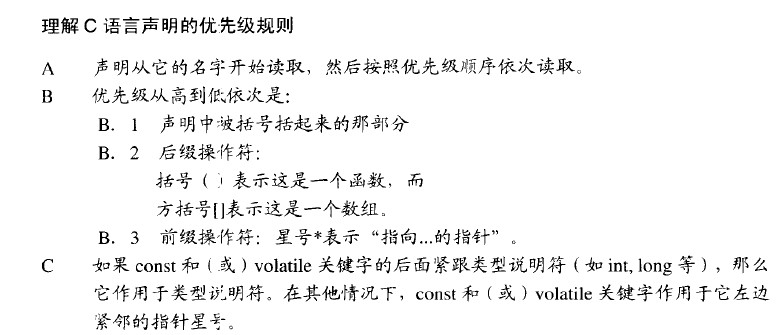我知道如何使用GDI捕获屏幕,但它很慢(它几乎没有捕获10 fps)
我已经读过DirectX提供最佳速度.但在我开始学习DirectX之前,我想测试一个样本,看看它是否真的那么快.
我发现这个question提供了一个示例代码来做到这一点:
void dump_buffer()
{
IDirect3DSurface9* pRenderTarget=NULL;
IDirect3DSurface9* pDestTarget=NULL;
const char file[] = "Pickture.bmp";
// sanity checks.
if (Device == NULL)
return;
// get the render target surface.
HRESULT hr = Device->GetRenderTarget(0,&pRenderTarget);
// get the current adapter display mode.
//hr = pDirect3D->GetAdapterDisplayMode(D3DADAPTER_DEFAULT,&d3ddisplaymode);
// create a destination surface.
hr = Device->CreateOffscreenPlainSurface(DisplayMde.Width,DisplayMde.Height,DisplayMde.Format,D3DPOOL_SYSTEMMEM,&pDestTarget,NULL);
//copy the render target to the destination surface.
hr = Device->GetRenderTargetData(pRenderTarget,pDestTarget);
//save its contents to a bitmap file.
hr = D3DXSaveSurfaceToFile(file,D3DXIFF_BMP,pDestTarget,NULL,NULL);
// clean up.
pRenderTarget->Release();
pDestTarget->Release();
}
我试图包含所需的文件.然而,并非所有这些都可以包括在内(例如#include< D3dx9tex.h>).
任何人都可以提供一个包含所有必需包含的工作示例,或者指出我应该安装哪些库.
我在Windows 7旗舰版(x64)上使用Visual C 2010 Express.
编辑:
此外,此代码不完整,例如什么是设备标识符?!
解决方法
以下是使用DirectX 9捕获屏幕的一些示例代码.
您不必安装任何SDK(Visual Studio附带的标准文件除外,尽管我没有测试过VS 2010).
您不必安装任何SDK(Visual Studio附带的标准文件除外,尽管我没有测试过VS 2010).
只需创建一个简单的Win32控制台应用程序,在stdafx.h文件中添加以下内容:
#include <Wincodec.h> // we use WIC for saving images #include <d3d9.h> // DirectX 9 header #pragma comment(lib,"d3d9.lib") // link to DirectX 9 library
以下是示例主要实现
int _tmain(int argc,_TCHAR* argv[])
{
HRESULT hr = Direct3D9TakeScreenshots(D3DADAPTER_DEFAULT,10);
return 0;
}
这将做的是捕获10倍的屏幕,并将“cap%i.png”图像保存在磁盘上.它还将显示此时间(保存图像不计算在该时间内,仅屏幕捕获).
在我的(台式机Windows 8 – 戴尔Precision M2800 / i7-4810MQ-2.80GHz /英特尔HD 4600这是一台非常糟糕的机器……)机器上,它需要在约4秒内完成100次1920×1080捕获,因此大约需要20/25 fps.
HRESULT Direct3D9TakeScreenshots(UINT adapter,UINT count)
{
HRESULT hr = S_OK;
IDirect3D9 *d3d = nullptr;
IDirect3DDevice9 *device = nullptr;
IDirect3DSurface9 *surface = nullptr;
D3DPRESENT_PARAMETERS parameters = { 0 };
D3DDISPLAYMODE mode;
D3DLOCKED_RECT rc;
UINT pitch;
SYSTEMTIME st;
LPBYTE *shots = nullptr;
// init D3D and get screen size
d3d = Direct3DCreate9(D3D_SDK_VERSION);
HRCHECK(d3d->GetAdapterDisplayMode(adapter,&mode));
parameters.Windowed = TRUE;
parameters.BackBufferCount = 1;
parameters.BackBufferHeight = mode.Height;
parameters.BackBufferWidth = mode.Width;
parameters.SwapEffect = D3DSWAPEFFECT_DISCARD;
parameters.hDeviceWindow = NULL;
// create device & capture surface
HRCHECK(d3d->CreateDevice(adapter,D3DDEVTYPE_HAL,D3DCREATE_SOFTWARE_VERTEXPROCESSING,¶meters,&device));
HRCHECK(device->CreateOffscreenPlainSurface(mode.Width,mode.Height,D3DFMT_A8R8G8B8,&surface,nullptr));
// compute the required buffer size
HRCHECK(surface->LockRect(&rc,0));
pitch = rc.Pitch;
HRCHECK(surface->UnlockRect());
// allocate screenshots buffers
shots = new LPBYTE[count];
for (UINT i = 0; i < count; i++)
{
shots[i] = new BYTE[pitch * mode.Height];
}
GetSystemTime(&st); // measure the time we spend doing <count> captures
wprintf(L"%i:%i:%i.%i\n",st.wHour,st.wMinute,st.wSecond,st.wMilliseconds);
for (UINT i = 0; i < count; i++)
{
// get the data
HRCHECK(device->GetFrontBufferData(0,surface));
// copy it into our buffers
HRCHECK(surface->LockRect(&rc,0));
CopyMemory(shots[i],rc.pBits,rc.Pitch * mode.Height);
HRCHECK(surface->UnlockRect());
}
GetSystemTime(&st);
wprintf(L"%i:%i:%i.%i\n",st.wMilliseconds);
// save all screenshots
for (UINT i = 0; i < count; i++)
{
WCHAR file[100];
wsprintf(file,L"cap%i.png",i);
HRCHECK(SavePixelsToFile32bppPBGRA(mode.Width,pitch,shots[i],file,GUID_ContainerFormatPng));
}
cleanup:
if (shots != nullptr)
{
for (UINT i = 0; i < count; i++)
{
delete shots[i];
}
delete[] shots;
}
RELEASE(surface);
RELEASE(device);
RELEASE(d3d);
return hr;
}
请注意,此代码隐含地链接到WIC(Windows中包含的成像库已有相当长的一段时间)以保存图像文件(因此您不需要需要安装旧版DirectX SDK的着名D3DXSaveSurfaceToFile):
HRESULT SavePixelsToFile32bppPBGRA(UINT width,UINT height,UINT stride,LPBYTE pixels,LPWSTR filePath,const GUID &format)
{
if (!filePath || !pixels)
return E_INVALIDARG;
HRESULT hr = S_OK;
IWICImagingFactory *factory = nullptr;
IWICBitmapEncoder *encoder = nullptr;
IWICBitmapFrameEncode *frame = nullptr;
IWICStream *stream = nullptr;
GUID pf = GUID_WICPixelFormat32bppPBGRA;
BOOL coInit = CoInitialize(nullptr);
HRCHECK(CoCreateInstance(CLSID_WICImagingFactory,nullptr,CLSCTX_INPROC_SERVER,IID_PPV_ARGS(&factory)));
HRCHECK(factory->CreateStream(&stream));
HRCHECK(stream->InitializeFromFilename(filePath,GENERIC_WRITE));
HRCHECK(factory->CreateEncoder(format,&encoder));
HRCHECK(encoder->Initialize(stream,WICBitmapEncoderNoCache));
HRCHECK(encoder->CreateNewFrame(&frame,nullptr)); // we don't use options here
HRCHECK(frame->Initialize(nullptr)); // we dont' use any options here
HRCHECK(frame->SetSize(width,height));
HRCHECK(frame->SetPixelFormat(&pf));
HRCHECK(frame->WritePixels(height,stride,stride * height,pixels));
HRCHECK(frame->Commit());
HRCHECK(encoder->Commit());
cleanup:
RELEASE(stream);
RELEASE(frame);
RELEASE(encoder);
RELEASE(factory);
if (coInit) CoUninitialize();
return hr;
}
我使用的一些宏:
#define WIDEN2(x) L ## x
#define WIDEN(x) WIDEN2(x)
#define __WFILE__ WIDEN(__FILE__)
#define HRCHECK(__expr) {hr=(__expr);if(FAILED(hr)){wprintf(L"FAILURE 0x%08X (%i)\n\tline: %u file: '%s'\n\texpr: '" WIDEN(#__expr) L"'\n",hr,__LINE__,__WFILE__);goto cleanup;}}
#define RELEASE(__p) {if(__p!=nullptr){__p->Release();__p=nullptr;}}
注意:对于Windows 8客户端,应删除所有这些(WIC除外)以支持Desktop Duplication API.

 浅谈C/C++中的指针和数组(一)指针是C/C++...
浅谈C/C++中的指针和数组(一)指针是C/C++... 从两个例子分析C语言的声明 在读《C专家编程》一书的第三章时...
从两个例子分析C语言的声明 在读《C专家编程》一书的第三章时... C语言文件操作解析(三) 在前面已经讨论了文件打开操作,下面...
C语言文件操作解析(三) 在前面已经讨论了文件打开操作,下面...